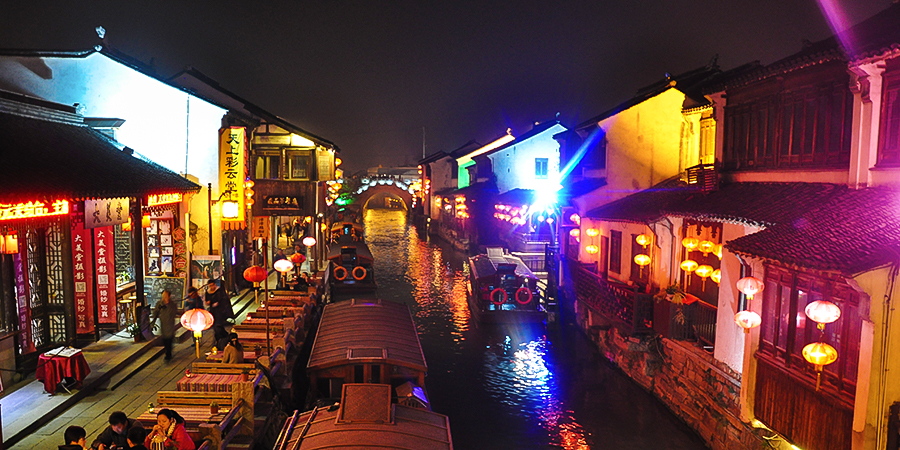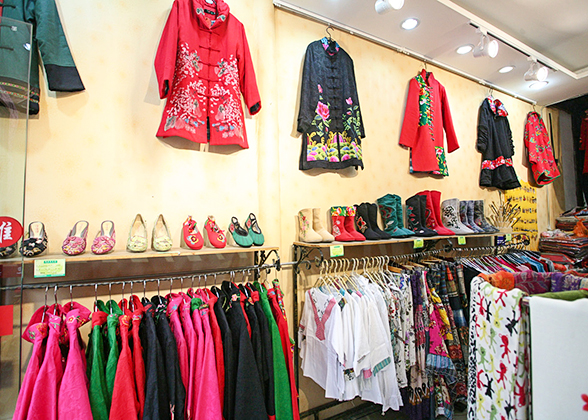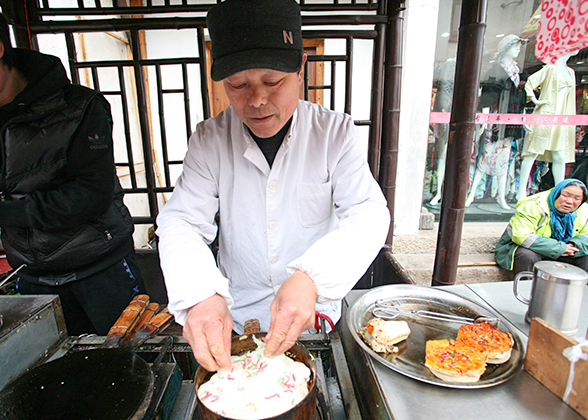Shantang Street, an ancient riverside pedestrian road in northwest Suzhou, Jiangsu, is very popular with tourists. From Changmen Gate (the west gate of the ancient city) in the downtown, it winds northwest on the northern bank of the Shantang River, and ends at scenic Tiger Hill. It extends about 2.2 miles (seven li), hence the name ‘Seven-Li Shantang’.
In 825, Bai Juyi, a renowned Tang Dynasty (618 - 907) poet, was transferred to Suzhou as the governor. There and then he inaugurated the Shantang River canal project. Later, a road parallel with the river on the north bank was constructed. These made Shantang block into a busy transport and commercial hub. The Shantang Street is cited as ‘the First Street in Suzhou’ mainly for three reasons: a history of nearly 1,200 years; representative of the local streets and alleys; and associated with distinguished people and events.
Shantang Street can be sectioned into two by Bantang Bridge. The east part, from Duseng Bridge in Changmen, is built up with houses and shops; while the west part, from the Tiger Hill, is natural landscape. The entire block features typical characteristics of south China in the lower reaches of the Yangtze River. The clear river meanders along under small arched bridges interspersed with wooden boats adrift, passing numerous old residences and shops on the bustling street. All the above is a picturesque rendering of a beautiful ancient water town in south China. It is ideally a place to stroll, try all kinds of local snacks and pick up souvenirs. You should go boating to take in the street scene from a different angle.
When night falls and the red lanterns glimmer below the eaves, it becomes hard to resist. Tourists could not help exclaiming, ‘Yes, this is Suzhou!’
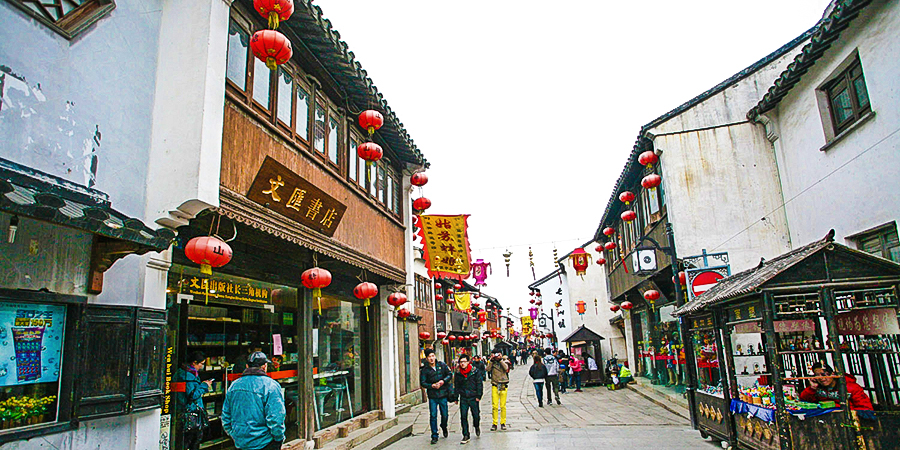 |
Old Shantang Street
The old street sector is about 395 yards (360 meters) long. Although it fills only one tenth of the length, it has the essence of the Shantang block and is called the 'miniature of the old Suzhou’ and the ‘window of Jiangsu culture’. It was a commodities hub, where merchants conducted business and community staged folk activities. It was one of the most eventful streets in
Ming (1368 - 1644) and
Qing (1644 - 1911) Dynasties. Qing Emperor Qianlong liked the Shantang Street very much. When he toured Suzhou in 1762, he left words to praise the wonderful scene. It was engraved on a stele that is still kept at the entrance of the street. He even built an imitation ‘
Suzhou Street’ in the imperial garden
Summer Palace in Beijing.
Nowadays the street reflects prosperity of both the present and the bygone era, with numerous shops and commercial guild halls. Tourists can try various snack shops with time-honored brands, including Caizhizhai, Wufangzhai and Qianshengyuan. There are also many specialty shops selling featured souvenirs like wood engravings, stones carvings and embroideries.
Tonggui Bridge
There are eight side bridges on the riverbanks and seven bridges spanning across the river, and the most famous one is Tonggui Bridge, a single arch stone bridge. It is 21 yards (19 meters) long and 2.5 yards (2.3 meters) wide. Looking like a half moon, the arch of bridge and its shadow in the water form a perfect circle. The bridge is not unique, but it is the most photographed. It is worth a boating trip to experience the life of ancient residents there.
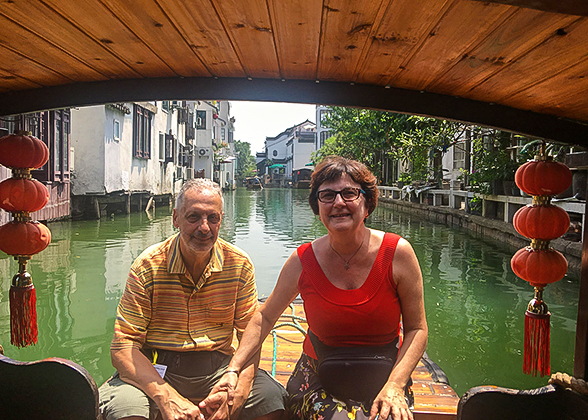 |
| Our Guests on the Tourist Boat |
Yuhan Hall
To the southwest of the Tonggui Bridge lies the Yuhan Hall, the former residence of Wu Yipeng, a famous Ming Dynasty official.
Antai Fire Fighting Team
To prevent fire accidents in the busy and narrow street, a fire fighting team was established in 1925. Now its headquarters become a museum showing the old fire fighting equipment.
Commercial Guild Museum
Commercial guild halls are offices for merchants from other places around China, mainly for the establishing contacts. Usually there are stages, wing-rooms, halls and even gardens. Since Shantang Street was one of the biggest Qing Dynasty commercial centers in southeast China, commercial guild halls abounded. A museum was built in 2005 to display the history of the commercial guilds and the commercial culture of Suzhou.
Transportation

Take
metro line 2 and get off at Shantang Street Station.

Take bus line 7, 34, 46, 54, 204, 304, 317, 318, 406, 415, 522, 921, 949, 970, 980 or Gusu Tourist Bus Line 1 and get off at Shantang Street Station.
Suzhou Bus Search | Admission Fee & Opening Hours | The block is free of charge and open all day long. |
| Boating | To Hanshan Temple: CNY 50 for a single trip, CNY 80 for a round trip; Hours: 08:00 - 16:30
To Huqiu: CNY 50 for a round trip; Hours: 08:00 - 20:00 |
- Last updated on Aug. 14, 2024 by Gabby Li -

